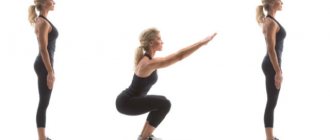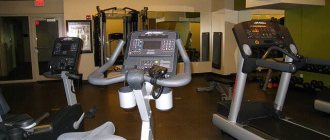Walking outdoors is the simplest and most convenient form of physical activity that can help you lose weight, improve your overall well-being, and strengthen your body's muscular system.
In this article, we will tell you why walking is useful, how many calories you can burn in a given time, and what is healthier: walking at a slow pace or jogging.
What are the benefits of walking?
Benefits of walking:
- Walking improves the functioning of the circulatory system and helps prevent the development of cardiovascular diseases. People over 60 who walk regularly can restore the elasticity of their arteries to what they were ten years ago, thereby improving blood flow and stabilizing blood pressure.
- Reducing the risk of developing diabetes. Research shows that just one 30-minute morning walk can significantly improve blood sugar control. Thanks to this, muscle cells can use more glucose, and consequently, the body is less prone to diabetes.
- Regular walking helps you lose weight. Constant walking will help you control your weight. Due to the fact that you burn calories, your bullets increase in frequency, this is useful not only for weight loss, but also for hormonal regulation. Walking makes our body more flexible, which also leads to increased muscle strength.
- Strengthening muscles and joints. A sedentary lifestyle is very harmful to bones and joints. Most often, the spine is the first to make itself felt, followed by the hips and muscles. It's simple: if you don't use them regularly, they weaken. All this leads to an increased risk of fractures and sprains.
- Boosting immunity. Constantly staying indoors with other people increases the risk of contracting various viruses. If you sit all day long, first in the office, then in the subway, and then on the sofa in the apartment, then the risk of infection for you is very high. In turn, walking in the fresh air strengthens the body and improves immunity.
How to walk correctly
The technique of proper race walking consists of several elements: you need to walk with a straight, vertical posture, with slightly bent arms, but at the same time maintaining freedom of movement.
There is no need to carefully check each step; walking should be extremely natural. That is, you need to walk the way you always walk. But you need to breathe while racing walking like a sportsman: inhale the air through your nose, exhale through your mouth.
You should also remember to wear comfortable clothing. You should choose the most loose and airy clothing possible.
It should not restrict your movements or increase sweating. And, of course, comfortable shoes with flexible soles are very important.
Separately, it is worth mentioning proper hydration of the body. A more or less intense walk is a serious physical activity that causes the body to lose water and various minerals containing elements such as sodium, potassium and magnesium. Their deficiency manifests itself, for example, in the form of painful calf cramps.
There are many ways to incorporate daily walking into your exercise routine. Here are some tips to improve your efficiency:
- Get off the bus early, stopping on your way home from work.
- If possible, take the stairs, do not use the elevator.
- Park further away from your destination.
- If you're tired of walking alone, take your dog with you.
- Listen to music or listen to audiobooks while jogging.
All of these small changes will help you avoid burnout and ensure that walking is not a burden for you, but a pleasure.
Kinds
There are several types of walking. Let's look at the most common of them.
On foot.
This type refers to ordinary walks that every person takes as needed throughout his life, if his health allows. However, in order for walking to have a healing effect, it is necessary to gradually increase the load and make it regular. At first, you should walk slowly and for short distances, then the speed and length of the path should be increased. Moreover, older people can continue to walk leisurely, but the duration of movement should gradually increase. If you comply with these conditions, you will notice that your quality of life becomes higher and your well-being becomes better.
Nordic walking.
This type differs from the previous one in that, while walking, a person leans lightly on two poles, which in appearance resemble ski poles. During Nordic walking, only 10% of the body's muscles remain unused. Scientists note the many positive effects that this type of activity has on the body:
- the heart muscle works better;
- ventilation of the lungs increases;
- the musculoskeletal system is strengthened.
Particular attention must be paid to the choice of sticks. Their size can be calculated using a simple formula: P x K, where P is a person’s height, and K is a constant coefficient that is equal to 0.68.
Race walking.
When practicing this type of walking, you need to move as fast as possible. However, you need to remember that running is prohibited. Race walking has a pronounced general strengthening effect. During it, the muscles get less tired than when a person runs. It is especially in demand among girls, since thanks to regular exercise their figure takes on attractive feminine shapes.
How many calories are burned in 1 hour of walking?
To lose weight, you need to burn more calories than you consume daily. It is believed that 0.5 kg of body weight equals approximately 3,500 calories. Based on this theory, you need to burn approximately 500 calories every day to lose 0.5 kg in a week.
In this case, an hour of walking is how many steps? According to research, daily active walking on the streets for 50-60 minutes a day allows you to lose 500-600 calories per day - that's about 10,000 steps. At the same time, taking two 20-minute walks at an average pace every day is considered more effective for losing weight than brisk walking for 40 minutes at a time.
Variants of incorrect gait
1. With each step, the pelvis tilts forward, causing a deflection in the lower back.
Photo by the author. Model - Serafima Konysheva, Iyengar yoga teacher
2. With each step, the pelvis twists to the right and left.
3. With each step, the weight is transferred to the hip joint, the pelvis tilts.
Photo by the author. Model - Serafima Konysheva, Iyengar yoga teacher
4. Shuffling gait, legs dragging along the ground with each step.
Photo by the author. Model - Serafima Konysheva, Iyengar yoga teacher
How many calories are burned when walking 5 km?
To calculate the calories burned during a walk, you need to take a number of factors into account. Both calorie burning and calorie consumption depend on age, gender, size, body weight and, of course, the duration of walking.
When walking at a moderate pace of 5 km/h, a person weighing 100 kg burns 75 calories/km and a person weighing 80 kg burns 60 calories/km (Assumed height 1.65 m for women and height 1.80 m for men).
Thus, walking a distance of 5 km, on average a person will be able to burn from 375 to 400 kcal.
The Secret Door
The Secret Door is another entertainment service that is based on Google maps. It’s not for nothing that the name “Secret Door” hints at a mysterious and magical atmosphere.
The idea is as simple as it is ingenious. Opening the “door”, you find yourself on a panoramic image of a random area, which could be a city street, a museum, a nature reserve, a souvenir shop - a completely arbitrary panorama from Google. The service rarely “throws” into local panoramas; most often it comes across those that you can walk through.
Some locations can be guessed right away, others cannot be guessed without a hint.
Managing The Secret Door is as simple as the service itself
- To start your virtual journey, click on the door (enter).
- To change the location, click on the inscription “Take me someone else” (Give me something else), then the service will immediately take you to some other area. Alternatively, return to the door using "Return to the Door" and open it again.
- If you want to know exactly where you are, click the inscription: “View on Google maps.”
In my opinion, The Secret Door is a great time killer. It seems like I just sat down, and lo and behold, an hour and a half has already passed. The only thing I would write down as a minus is the monotonous soundtrack. It is perceived well for the first 3-5 minutes, then it gets boring. To relax properly, I recommend turning off the sound on the site in your browser and playing your favorite music in the background.
But be careful! Passing through the next “Secret Door” you can get lost in the labyrinth of Google worlds.
Cover: panorama from the Yandex.Maps service
How many calories are burned when walking 10 km?
When walking 10 kilometers in one go, you can lose up to 800 kcal.
But such long walks are very exhausting and only trained walkers can cope with them.
As for speed, walking for 3 hours a day at an average pace (5 km/h) is recommended.
Although, theoretically, there is a speed at which you burn the same number of calories (per minute) both when running and walking: it is about 8 km/h.
But for the average person, a pace above 5 km/h will be too fast.
Training program
For convenience, we have prepared a table that will help you choose the appropriate pace depending on your goal.
| # | Speed in steps | Speed in km/h | Training time (number of hours) | Target |
| So slow | 60—70 | 2,5—3 | 0,5—1 | Recovery, recovery |
| Slowly | 70—90 | 3—4 | 1 | General strengthening effect, body tone |
| Moderately | 90—120 | 4—5,5 | 1,5—2 | Weight loss |
| Fast | 120—140 | 5,6—6,5 | 2 | Training |
| Very fast | 140 and more | 6.5 and more | 2 or more | Sport |
When, how and how much to go?
How many steps does a person take per hour? Experts say the average is about 6,000 steps per day. But if you want to lose weight, you need to take at least 10,000 steps a day. This corresponds to approximately 30 minutes of brisk walking.
The average person sleeps 8 hours a day, does 8 hours of sedentary office work and moves little.
Then his calorie intake will be about 2220 kcal. If this person took a moderate walk every day, they would burn 248 more calories. How long will it take to lose a pound of fat just by walking? Let's get a look:
- 1 kg of fat corresponds to approximately 7000 calories;
- 248 kcal x 7 days = 1736 calories;
- 7000:1736 = 4.03.
So, to lose 1 kg of fat, you will need 4 weeks of daily walking at a moderate pace.
In total, walking for an hour a day at a brisk pace (about 7 km/h) will burn about 360 calories. That's the equivalent of one whole McDonald's cheeseburger.
But it should be noted that here we are proceeding from an ideal situation in which you do not overindulge in sweets, do not eat at night, etc. Even one large glass of beer on the weekend will more than compensate for the calories burned during the walk.
It is better and more enjoyable to walk in parks with small hills (or even better in the mountains), and not on a treadmill or in a stadium. Jumping from curbs, walking up stairs, overcoming small obstacles - all these are also additional exercises that will make you even more athletic. And when you stop and move, for example, through a pedestrian crossing, you give your muscles the break they need and stimulate them to work more efficiently.
Walking in place
If you don't have the opportunity to regularly go for walks outside, that's okay.
In a study published in German medical journals, participants who walked in place for an hour burned an average of 258 calories, compared with about 304 calories for people who exercised on a treadmill for that time.
As you can see, the difference is not very significant: only 46 calories.
This study also found that those who walked during breaks burned an additional 148 calories in 25 minutes.
Walking up the stairs
Walking up and down stairs has enormous aerobic benefits. Professional skiers who prepare their legs for competitions train on the stairs. Professional models do the same - nothing shapes your legs for the catwalk more than constantly going up and down the stairs. The rate of calorie consumption when walking up stairs is much higher compared to walking or even running.
The body loses about 0.17 calories when going up and 0.05 calories when going down one step. If you walk up and down the stairs every day for at least half an hour, your body will be able to burn at least 300 calories.
Hiking routes
To prevent walking from feeling boring, change your routes from time to time.
Use maps, plan your distance, look for new roads.
Parks, squares, embankments are great places for walking, but a route from one metro station to another, on the way to work and back, will also work.
Tired of asphalt - go over rough terrain. Tired of the ups and downs, you can stupidly walk in circles around the nearby stadium.
Various routes will make the walk more interesting, increase motivation, and expand geographical knowledge of the area.
Heart rate while walking
The key to losing weight and getting fit is to increase your heart rate. Whether you're walking outdoors or outdoors, if you can get your heart rate up, you'll burn more calories.
To burn fat, you should train in the range of 60-70% of your maximum heart rate.
However, heart rate is a very individual indicator. It depends on how much you exercise, how old you are, how much you weigh, what your resting heart rate is, etc. Simply put, the more you exercise and the younger you are, the higher your maximum heart rate.
Walking shoes
For walking, you should choose shoes with good shock absorption, which are responsible for absorbing shock and dispersing vibrations.
Choose lightweight sneakers made of breathable fabric for comfortable training in the hot season.
Terrain also plays a huge role when choosing walking shoes. If you plan to walk on asphalt, choose sneakers with a high level of wear. If you prefer to walk on rough terrain, choose a model with a hard sole and durable tread.
Sneakers for walking in mountainous areas, in turn, must have good grip, an effective shock absorption system, a sole, and a breathable interior.











